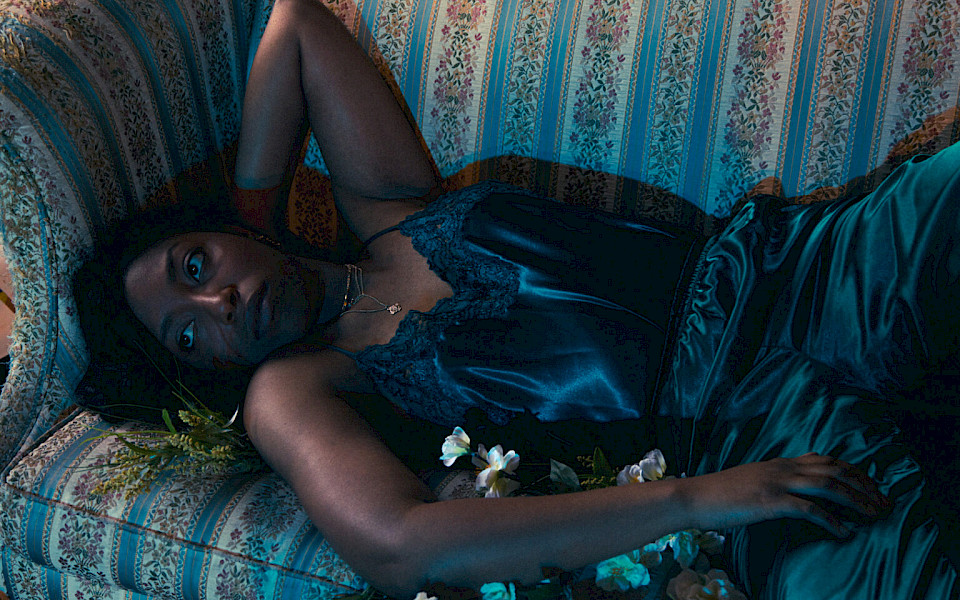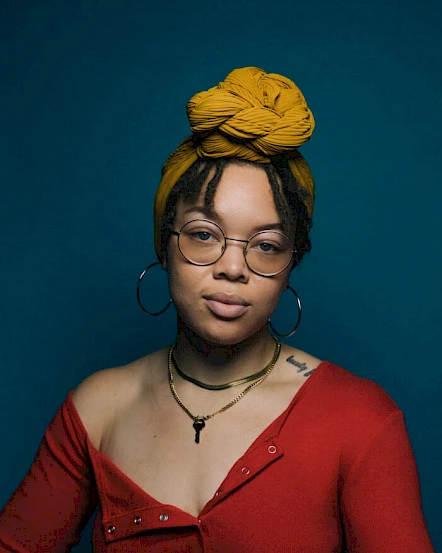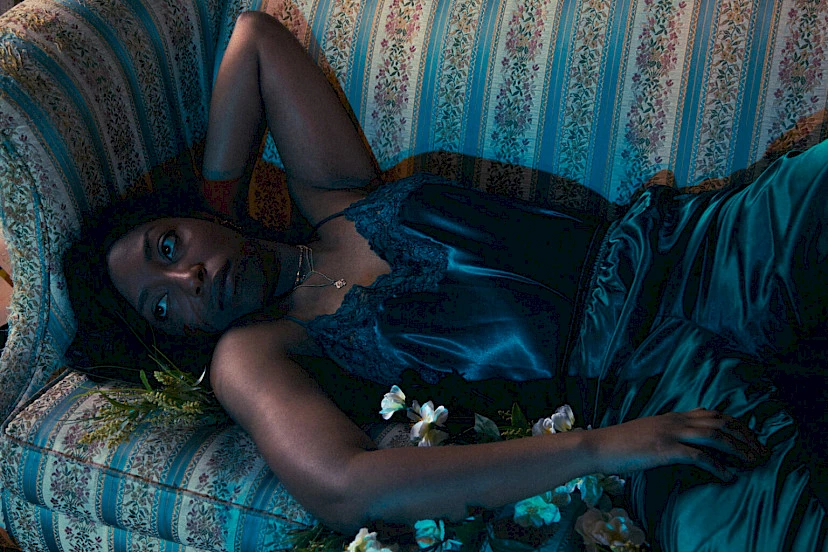


Delta Voices: Catherine Elizabeth Patton
 This summer, the Arkansas Museum of Fine Arts launches Delta Voices: Artists of the Mid-South, a limited podcast and video series highlighting emerging artists working in the Mid-South. The series was created in collaboration with the Crystal Bridges Museum of American Art, the Memphis Brooks Museum of Art, and the Mississippi Museum of Art. Each of the four episodes features an artist selected by curators at participating institutions. The Memphis Brooks Museum of Art selected Memphis-based artist Catherine Elizabeth Patton, who uses photography to practice mindfulness, highlight the beauty of Black women, and document the vibrant art community in Memphis.
This summer, the Arkansas Museum of Fine Arts launches Delta Voices: Artists of the Mid-South, a limited podcast and video series highlighting emerging artists working in the Mid-South. The series was created in collaboration with the Crystal Bridges Museum of American Art, the Memphis Brooks Museum of Art, and the Mississippi Museum of Art. Each of the four episodes features an artist selected by curators at participating institutions. The Memphis Brooks Museum of Art selected Memphis-based artist Catherine Elizabeth Patton, who uses photography to practice mindfulness, highlight the beauty of Black women, and document the vibrant art community in Memphis.
AMFA Associate Curator Theresa Bembnister spoke to artist Catherine Elizabeth Patton in July. To hear more of their interview, watch the video introduction on YouTube. This interview has been edited for length and clarity.
Theresa Bembnister: You use the word “vulnerable” a lot when you talk about your art. How does vulnerability show up in your photographs? As for making photographs, do you think you need to be vulnerable in order to do that well?
Catherine Elizabeth Patton: With any art, there’s a level of vulnerability you have to have in order to even create it. I definitely have struggled with being vulnerable, which is why it’s something that I want in my art so bad. Vulnerability is definitely not easy. I’ve been blessed to work with people who are better at it than me. In order for me to capture vulnerability, it takes a conversation. It takes me getting to know who I’m shooting. It takes talking and familiarity, which is why I work with some of the same people, because of the rapport you build with that person. They’re used to you behind your camera and eventually it feels like the camera is no longer part of the interaction. It’s making sure that I remain in a space where I care about the person that I’m shooting, and this is not just a means to an end. Sometimes with photography, you’ve got to get shots for a certain thing. So, you know, it is what it is. But if I can help it, I really like to be able to connect with the person that I’m shooting, because I think that is when I get my most vulnerable and most honest work.

TB: How do you find locations for your shoots?
CEP: Sometimes I just ride around, and if I see something interesting, I’ll take note of it or put it in my phone. And when that time strikes, it’s like that location will pop up. One of my first shoots was with the rapper AWFM. I had been passing by what was Sears on Poplar Avenue. It’s a storefront and at night they have like these super blue lights on under the awning. And I just thought that was interesting. I kept that location in the back of the mind and when it came time to shoot with him, that was just the first thing that popped up. And to this day that was one of my favorite scenes with him.
TB: You’ve done a lot of recent work with the creative group Unapologetic. What should people know about them?
CEP: People should know that Unapologetic is an arts collective. A lot of people think it’s just music—a record label. But Unapologetic is music. Unapologetic is visual. It’s media. It’s event coordination. It’s so many things. It’s like a collective of artists who came together to show that you can be yourself. You can be individual and still be part of a collective and push forward, push forward the art, push forward the idea of being individual, and being unapologetic about it. The artists in Unapologetic are absolutely amazing—so driven and so about the forward movement of Memphis culture in a way that there’s no erasure of black artists.

TB: What are the challenges and the opportunities of being an artist in the Mid-South?
CEP: I think the challenges are resources. I’m a photographer and I do not have a studio. I would love a studio, but I just don’t see many opportunities to make that happen. I don’t see many spaces that I can access to make that happen—having opportunities to be able to be in spaces that are affordable where I can create work. Other resources would be nice, like for photographers who can’t afford cameras, there are different rental spaces in place, like lens rentals. They held me down before I had my camera. But I wish that there were opportunities within the art community that would provide that for photographers and other artists, like painters who can’t afford paint. I will say the things that are in place, like the ArtsMemphis Arts Accelerator grant, are great. I’m a recipient of that. That is the reason I have a camera. But more opportunities like that would be so helpful. Resources for artists who don’t make a whole lot of money but are really trying to sink their teeth into their practice would be nice. And then opportunities for shows and opportunities for workshops to teach people how to navigate the art business is nice. We need more of it.
TB: What about the opportunities?
CEP: There are organizations that have just done so much. Tone afforded me opportunities for my first solo exhibition, for my first group shows that put me on track to do other things. Opportunities for Black artists, for young artists who want to get into the business of art but have no idea what they’re doing, they provided workshops for that, community outreach and things of that nature. Unapologetic has provided opportunities as well. I appreciate the Brooks and how they’ve started to look into more local artists, affording local artists more opportunities to show in an art museum. That is huge.
TB: What keeps you here in Memphis?
CEP: I think seeing the growth of the art scene here is really exciting. Seeing that there are people in the city who are building their own tables and inviting people to those tables is very exciting. Seeing that Memphis is starting to get well-deserved attention, for our art, for our contribution to music. Seeing growth in the city is really exciting. And that’s what’s kept me here. It’s been really rewarding to see organizations that were once grassroots become powerhouses. And then those organizations being organizations that have a heart for the community, that have a heart for Black artists, that have a heart for artists who didn’t go to art school so don’t really know the etiquette of the art world, but still deserve those spaces. That’s been extremely exciting for me. So that’s been keeping me here.

Check out Patton’s online portfolio for more of her works, and follow her on social media @bycatpatton
Delta Voices: Artists of the Mid-South’s presenting sponsor is Bank OZK. Additional support is provided by Friday, Eldredge & Clark, LLP; Judy C Thompson Trust; Barbara House; and the Andre Simon Memorial Trust Fund in memory of everyone who has died of acquired immune deficiency syndrome (AIDS).